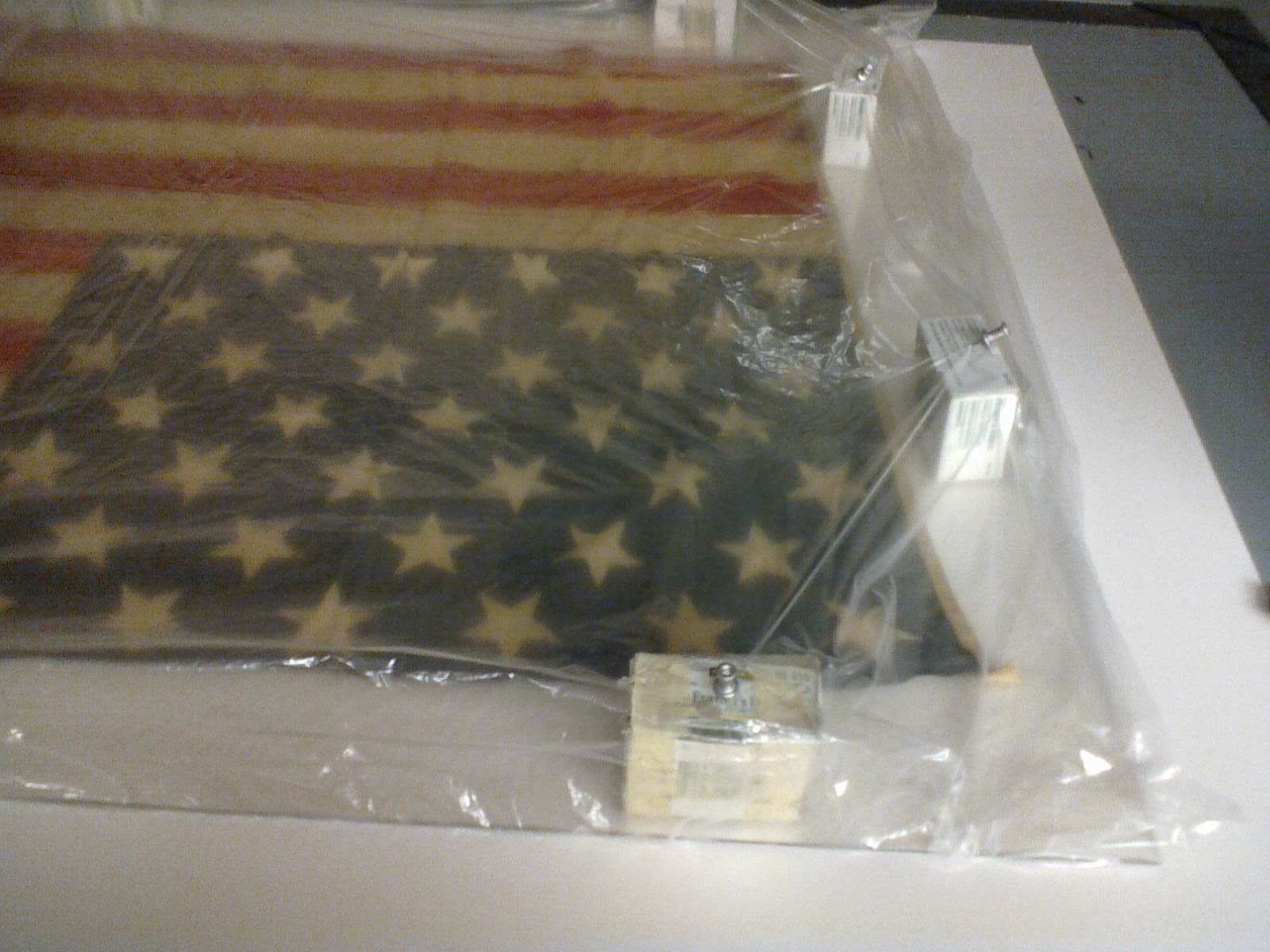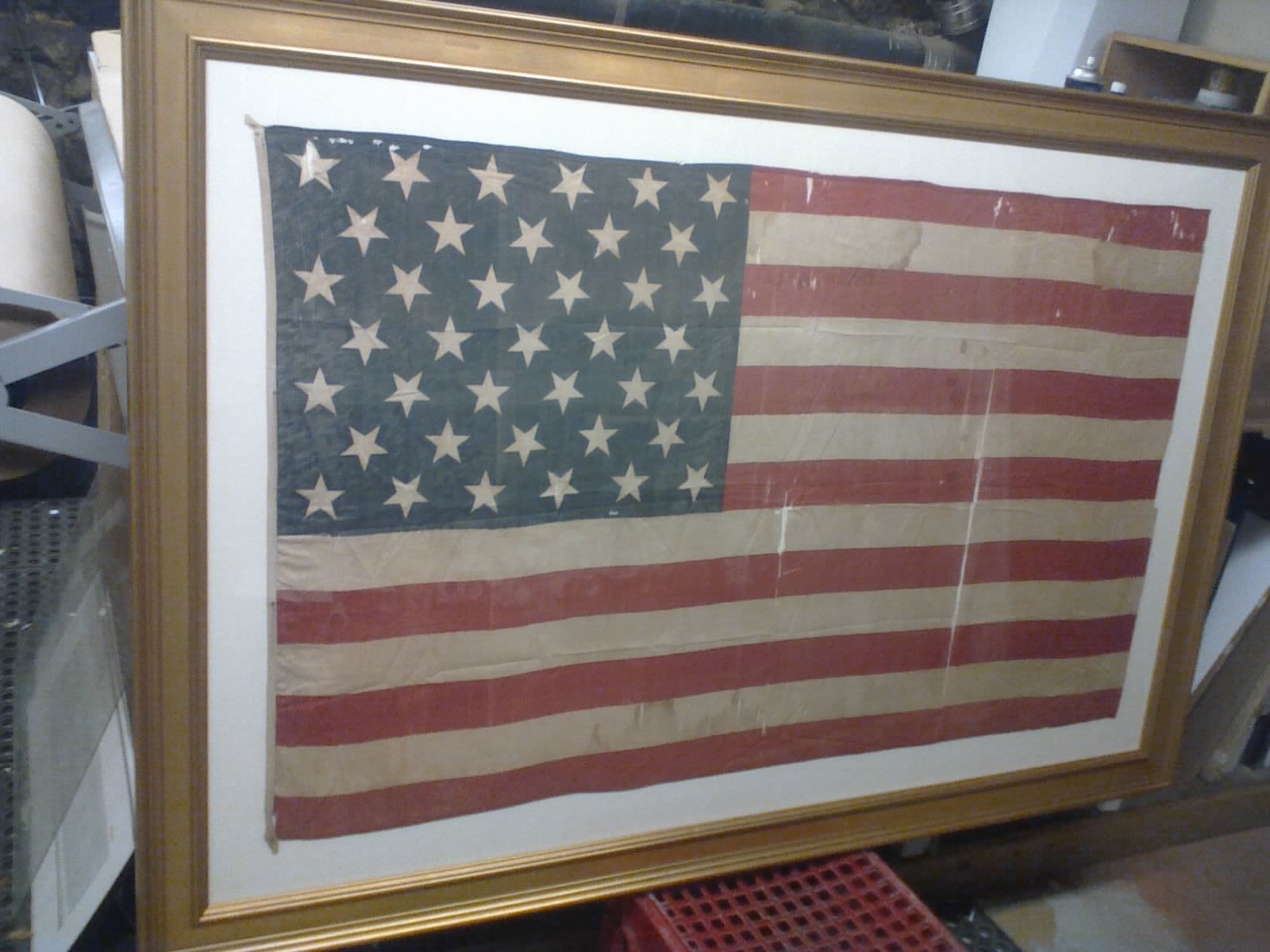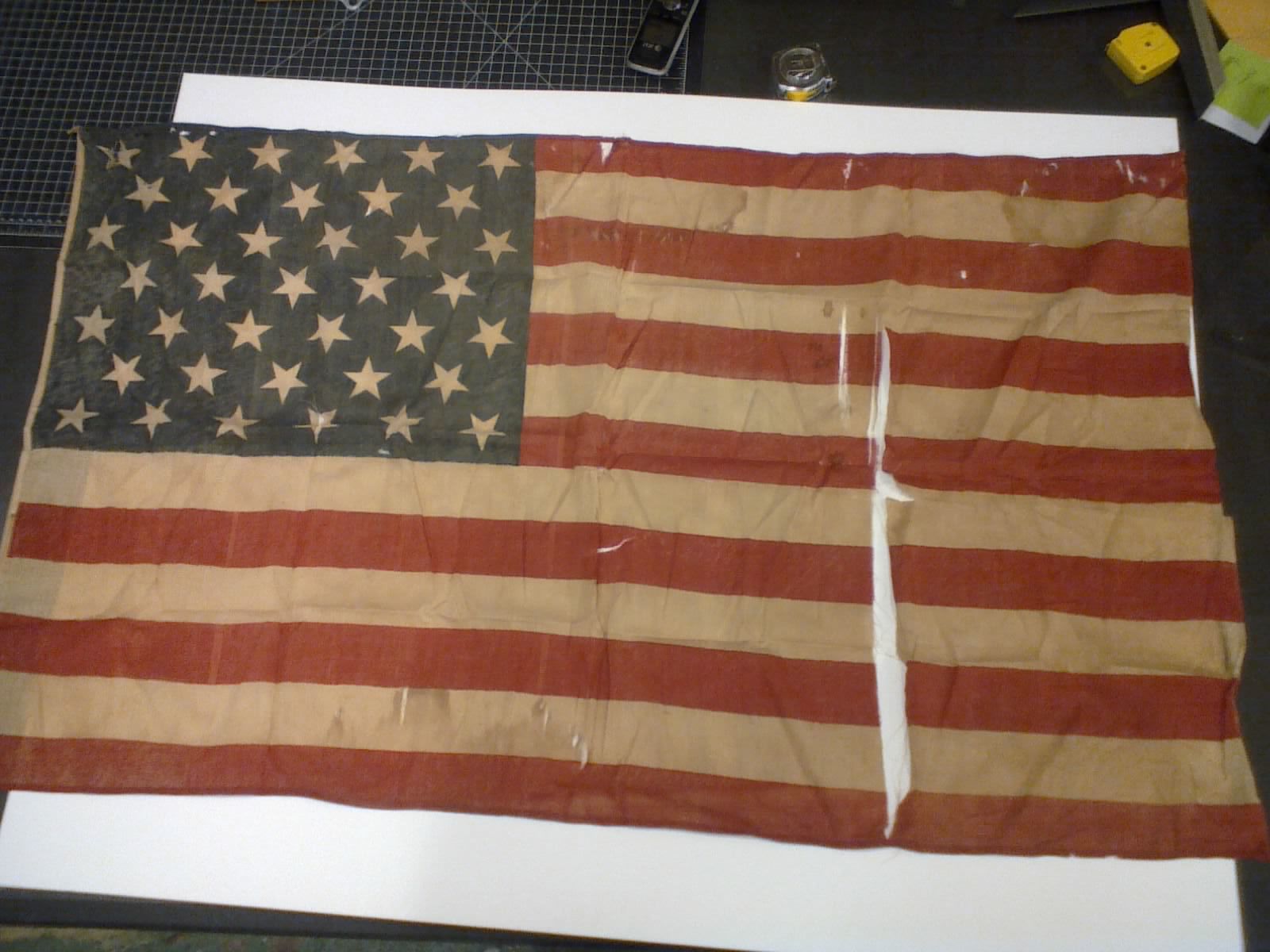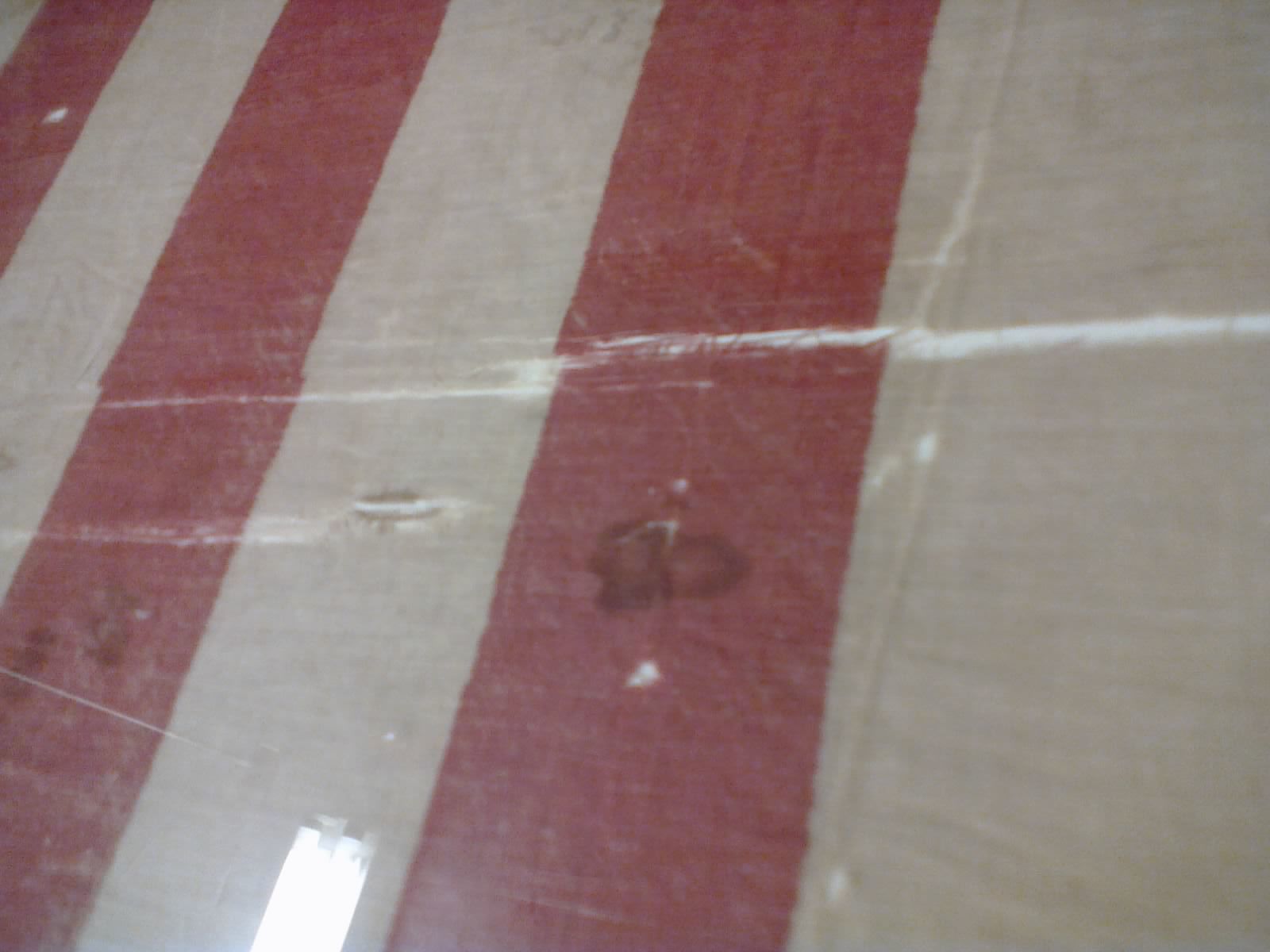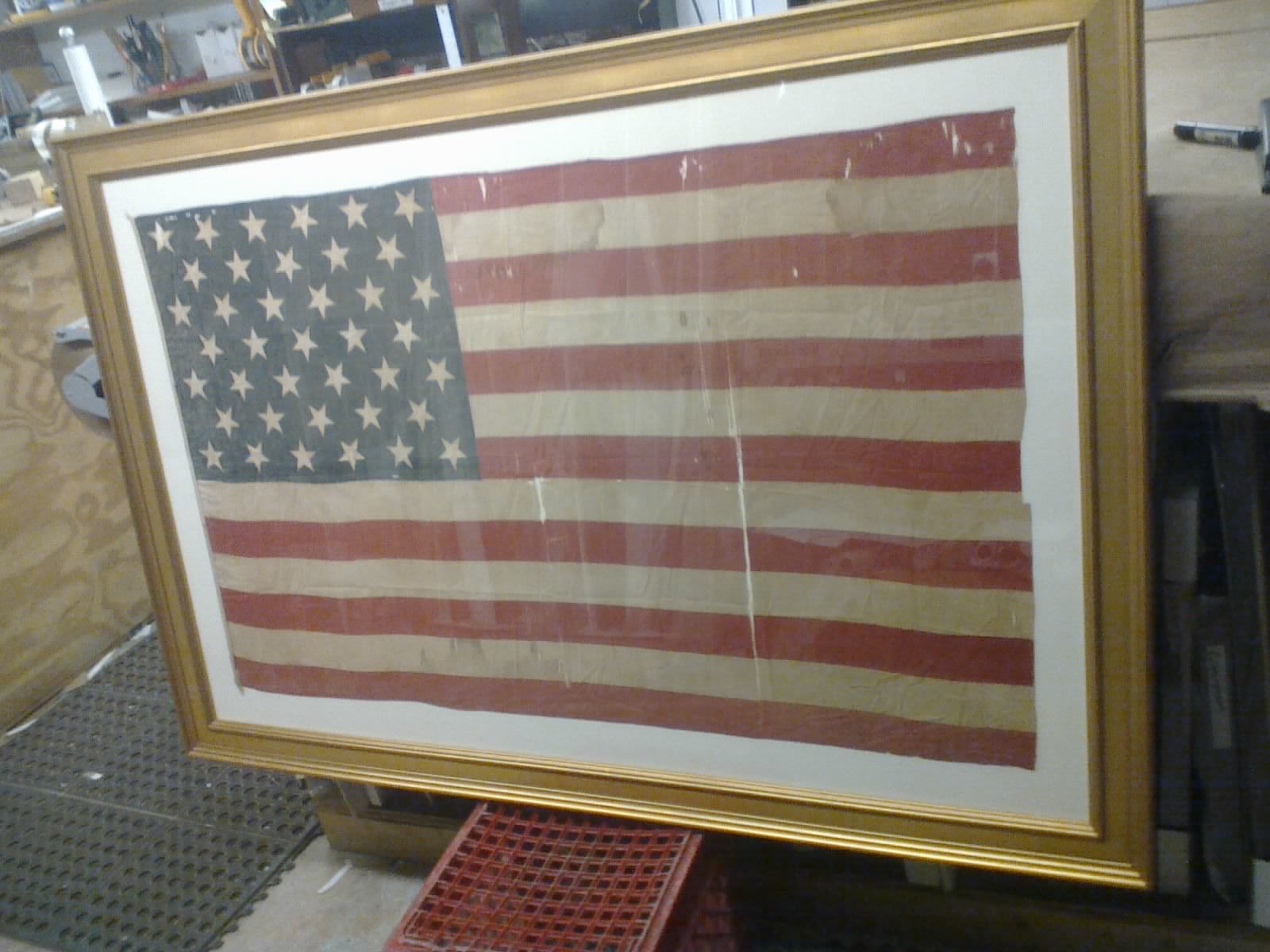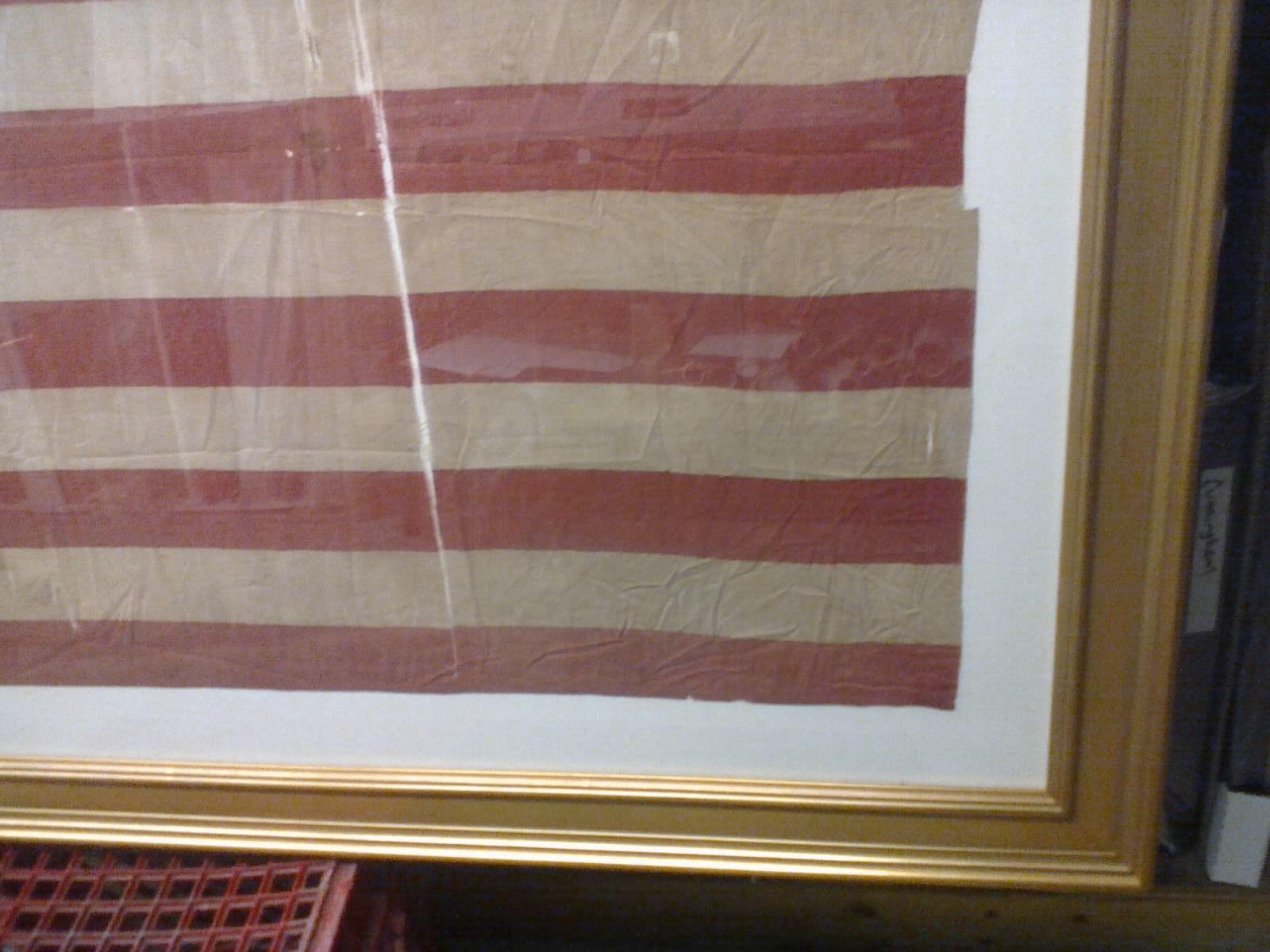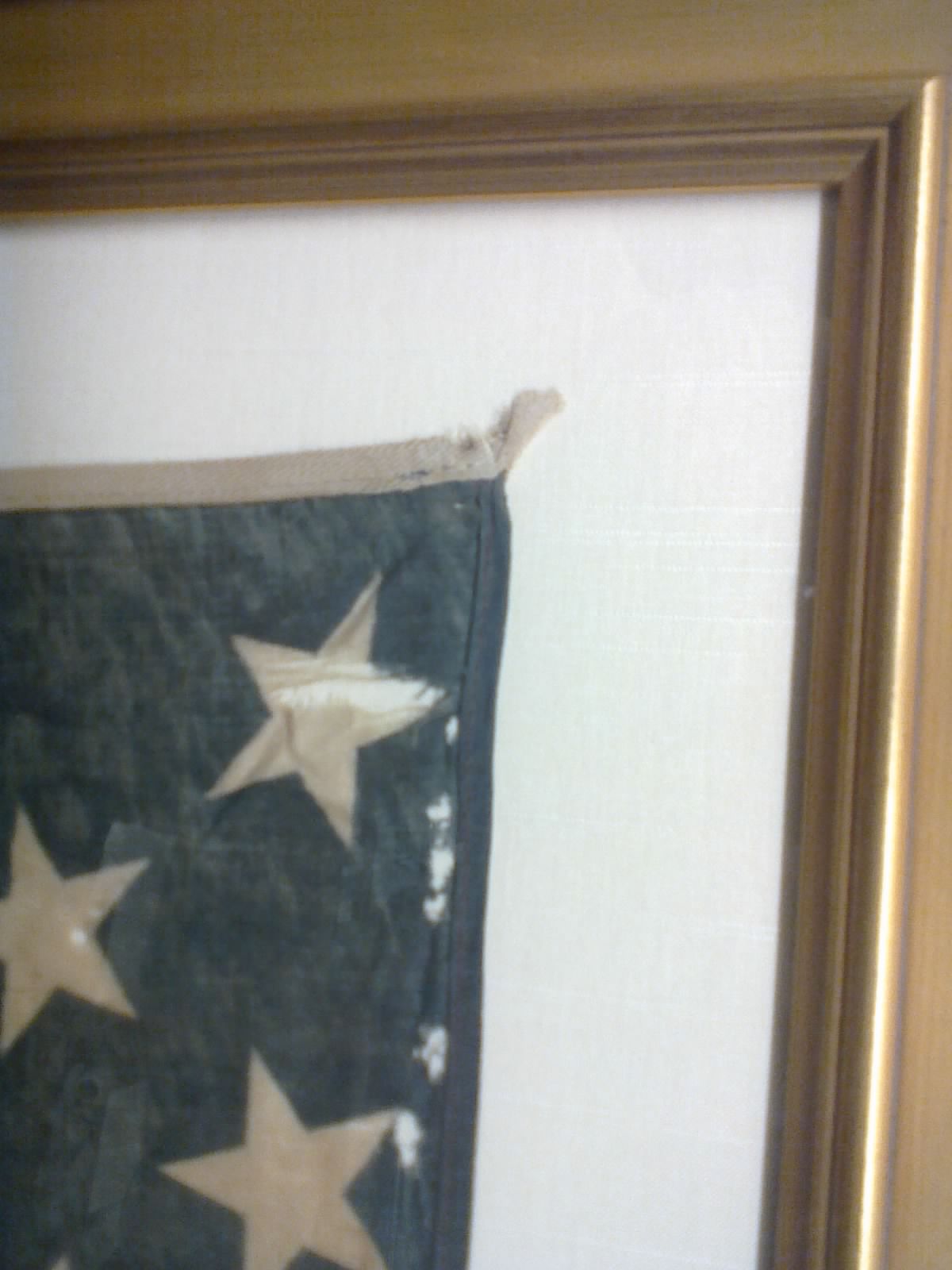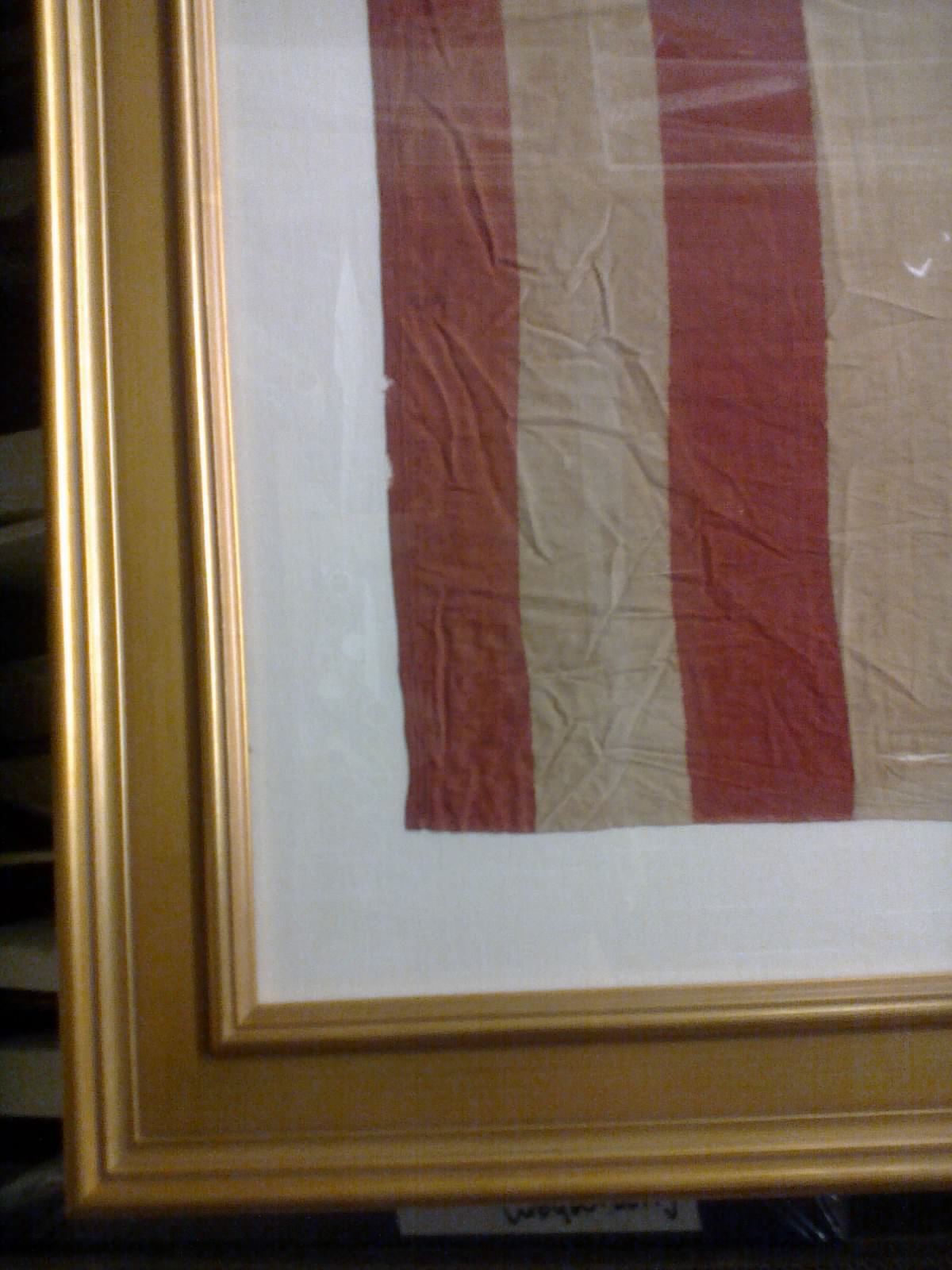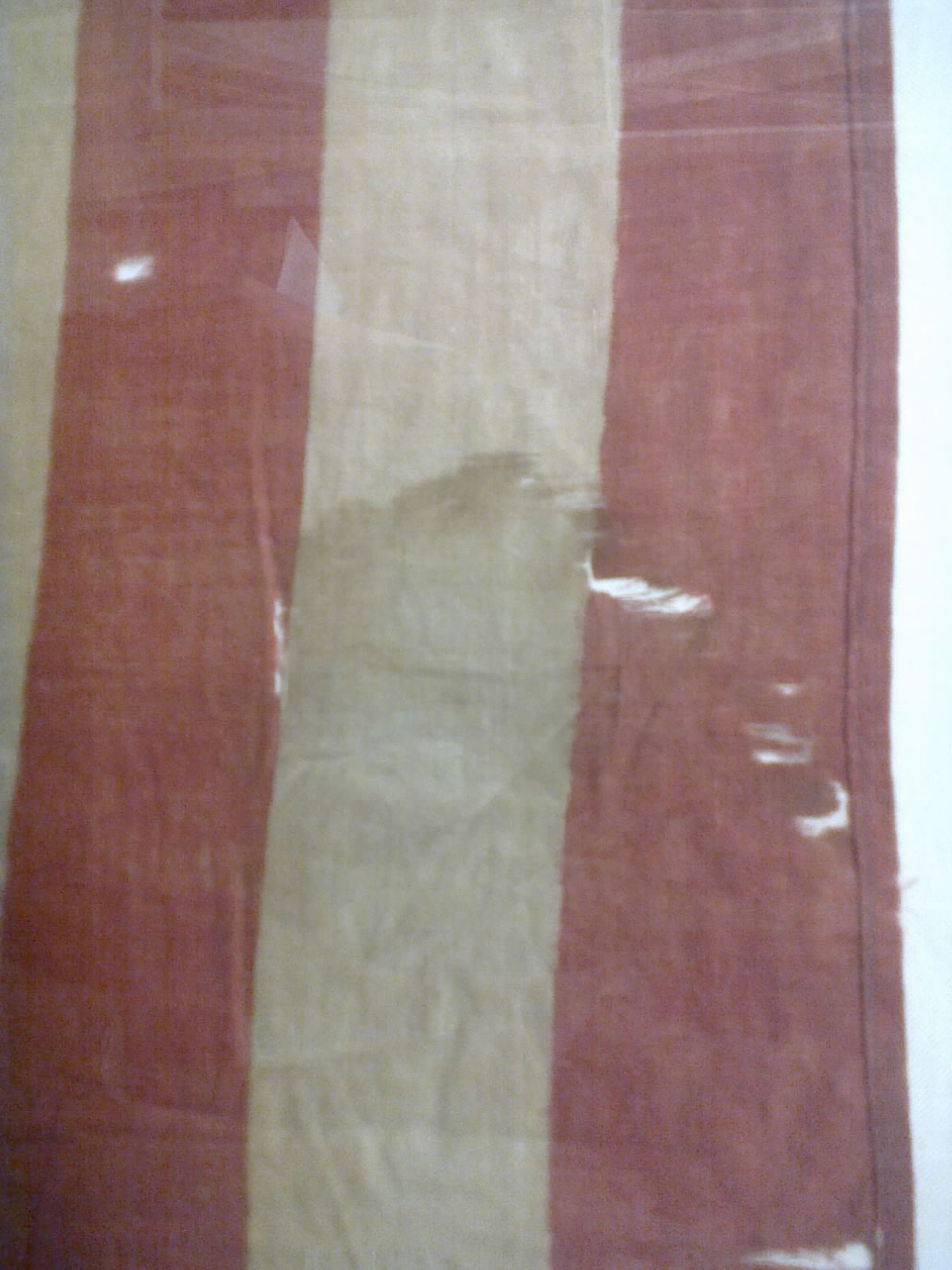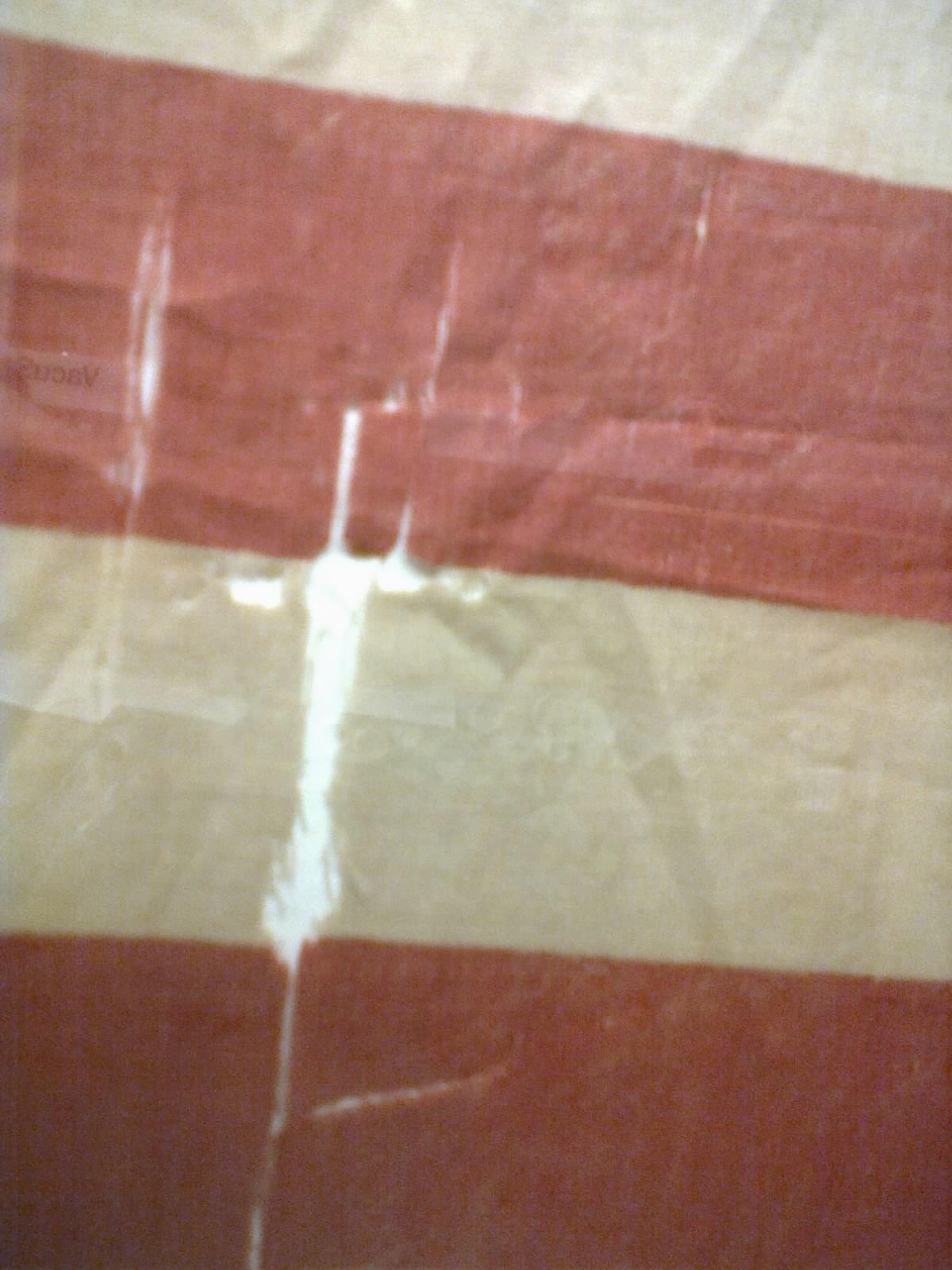ANCIENT AMERICANA OVERSTOCK
Our venerable flag has had many incarnations throughout it's long history. And, as with all evolutionary processes, vestigial variation can sometimes occur. In 1889, North and South Dakota were expected to be admitted as a single state. The company who manufactured the 39 star flag worked tirelessly to produce their product ahead of schedule. However, not only did Dakota split in two, three other states came into being soon after, rendering the entire stockpile of flags unusable. When a customer of ours brought in one of these rare 'unofficial' flags, we hovered around it as if it were the unveiling of a newly discovered mummy. For well over a century it had been folded and stored in unknown recesses. The fibers along some of the creases had rotted away, forming long tears in places. In order to take on the project I was going to have to consult an expert.
Washington DC seems an obvious location for a seasoned flag conservator, but had my assistant not worked with this woman while restoring antique theater backdrops she would have been completely off my radar. I had never really noticed the subtle tension between preservationists and conservationists until I consulted this restorer by phone. Too often the design element of the preservation process takes over, whereas conservation is a science. Case in point, I educated my client on the benefits of a more cautionary approach, as prescribed by the restorer, but he ended up favoring certain aesthetic choices. She suggested the flag be mounted vertically from the end with the thickest seam, which was already built strong enough to hang from a pole. She also preferred we use plastic spacers to lift the plexi glass off the textile for better air circulation. He preferred it to hang horizontally, and to forgo the spacers in the hopes that the pressure from the glass would even out some of the flags wrinkles. In the end we managed to strike a fair balance between approaches. It wasn't until later that I discovered this flag was going to require a little more effort than usual.
A conservation lab In Glasgow was commissioned to revive a two thousand year old Inuit parka made of seal gut. It was clenched into a permanent folded state and the only way they were able to coax it open was to administer controlled amounts of humidity over a period of several days. I laid the plexi glass directly on top of the flag and observed that the wrinkles not only didn't diminish under the pressure, they looked worse. I realized I was going to have to employ some variation of the technique used on the Inuit parka to tone the wrinkles and folds down a notch.
A conservation lab normally has certain equipment that a frame shop does not. Without a way to control the humidity precisely, using lower humidity over a longer period seemed like a better way to avoid the promotion of mold growth. Much like the one used in Glasgow, I built a humidification chamber out of clear plastic bags and tape. I didn't have pvc pipes on hand, so I just used stacked weights as pillars holding up the roof of the plastic bubble. To introduce humidity I placed several cut-down dixie cups filled with distilled water around the perimeter of the flag. I put the whole apparatus in a safe location and left it there for about two weeks. I had to check it periodically for the formation of condensation on the inside of the plastic, which would indicate that the evaporating water had finally raised the humidity levels enough to soften the textile. I then placed the flag between two layers of blotting paper and applied even pressure for a day or so. I flipped the blotting paper sheets and returned the flag to the flattening process. A few days later the flag emerged, flatter than before, and ready to be sewn to the linen mat backing.
DISCLAIMER: I am not a conservator. I have not been trained in conservation. I said a few Hail Marys and held my breath, I'm lucky this worked without incident. Do your homework, every textile is different.
The hem of the flag was sewn by hand, and I took care to sew through the existing holes to avoid further disruption of the brittle fibers. The hem was uneven, so I made my stitches true to each curve to make sure that the torn areas could still lay flat enough to close the gap between them. All the long fibers wisping off each tear line had to be tucked underneath the flag. I tacked the corners down to keep everything in alignment, then rested the plexi glass on top of the flag to see how things turned out. The pressure of the glass still promoted some unwanted puckering, but it looked worlds better than it did prior to treatment. Once fully framed the pressure let up some as the backing assumed a slight curve around the center.
Overall this strange experiment had healthy results, and the customer was delighted. I can't say I'm about to rush into getting a master's degree, but I found it exciting to feel like I was in a PBS documentary about uncovering artifacts from ancient civilizations.


